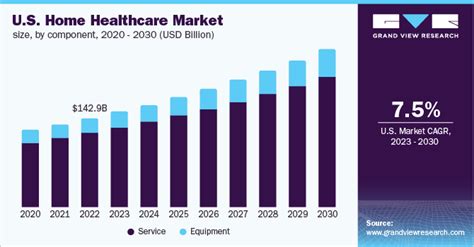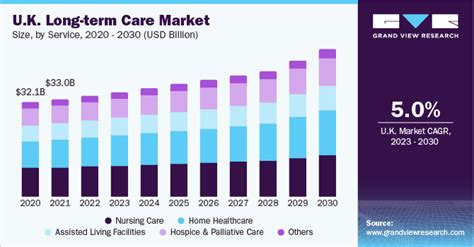Aging in place has become an increasingly preferred option for many elderly individuals, allowing them to stay in the comfort of their own homes while receiving the care they need. However, ensuring both comfort and safety in this environment requires careful planning and consideration. This article delves into the essentials of elderly home care, highlighting the benefits of aging in place, necessary home modifications, and various types of in-home care services available. We also explore the growing role of technology in supporting elderly care, financial options for assistance, and the importance of caregiver support to maintain the well-being of both the elderly and their caregivers.
Join ujocis.net as we delve deeply into this topic.
1. Overview of Elderly Home Care
Elderly home care offers a comprehensive array of services and support designed to assist seniors in their own homes. This approach allows individuals to age comfortably and maintain their independence while receiving assistance with daily tasks and medical needs. The focus is on ensuring safety and well-being, with services ranging from basic household help and companionship to specialized medical care, tailored to each individual’s unique requirements.
Home care offers a significant advantage: individualized support tailored to each person’s unique needs. Elderly individuals can access assistance with various tasks, including personal care (bathing, dressing), meal preparation, medication management, and even physical therapy or nursing care when necessary. This personalized approach fosters a higher quality of life, preserving the familiar environment and routines that are crucial for emotional well-being.
Furthermore, elderly home care cultivates deeper connections between caregivers and the individuals they support. By working together, family members, professional caregivers, and healthcare providers can develop a comprehensive care plan that adapts to the evolving needs of the senior. This collaborative approach empowers seniors to maintain their ties to their community and loved ones while receiving necessary assistance, making home care an attractive option for many aging individuals and their families.

2. Benefits of Aging in Place
Aging in place provides significant advantages for older adults, primarily by enabling them to stay within the comforting familiarity of their own homes. The well-known surroundings contribute greatly to their emotional well-being, offering a sense of continuity and stability. This familiarity helps reduce stress and anxiety, which can be prevalent among seniors who are transitioning to institutional care environments.
Beyond emotional well-being, aging in place fosters increased independence. Seniors retain control over their daily lives, safeguarding their autonomy while accessing necessary care. This flexibility elevates their quality of life, allowing them to pursue hobbies, socialize, and participate in community activities at their own pace.
Aging in place frequently demonstrates greater cost-effectiveness compared to options such as nursing homes, especially when family members participate in caregiving. Moreover, personalized home care mitigates the risks of loneliness and isolation, promoting stronger bonds with loved ones and caregivers. These relationships are crucial for both physical and mental well-being.

3. Essential Home Modifications for Safety
Aging in place requires prioritizing safety, as seniors are at increased risk of accidents, especially falls. Making necessary home modifications can greatly reduce these risks and enhance safety. One common modification is installing grab bars in bathrooms, especially near toilets and showers, to provide stability and prevent slips. Non-slip flooring, particularly in bathrooms and kitchens, is also crucial for minimizing the risk of falls.
A key modification involves improving lighting throughout the home. Bright, well-lit spaces make it easier for seniors, especially those with vision impairments, to navigate their surroundings. Staircases should have sturdy handrails on both sides, and in some cases, installing stair lifts can provide an extra safety measure.
For individuals who rely on mobility aids like walkers or wheelchairs, widening doorways and installing ramps are often essential. Lowering countertops and cabinets can also significantly improve accessibility within the kitchen. Smart home technology, such as fall-detection sensors and emergency alert systems, provide an extra layer of safety by enabling rapid responses in the event of an accident. These modifications empower seniors to maintain their independence while simultaneously mitigating potential hazards in their everyday surroundings.

4. Types of In-Home Care Services
In-home care services for the elderly offer a spectrum of support, ranging from basic household assistance to comprehensive medical care. These services are commonly grouped into three primary categories: personal care, homemaker services, and skilled healthcare.
Personal care services provide assistance to seniors with essential daily tasks, known as activities of daily living (ADLs). This includes support with bathing, dressing, grooming, and toileting. Caregivers can also help with mobility, ensuring safe movement around the home. These services are vital for seniors who may face physical challenges but desire to maintain their independence.
Homemaker services, on the other hand, encompass tasks such as cooking, cleaning, laundry, and grocery shopping. By offering help with these everyday chores, caregivers allow elderly individuals to live comfortably without the physical burden of managing their homes.
Skilled healthcare services are tailored to individuals needing medical care within the comfort of their own homes. These services encompass a range of needs, such as medication administration, wound care, physical therapy, and monitoring of chronic conditions. Licensed professionals, including nurses and therapists, are typically responsible for delivering these services.
Beyond the primary categories, companionship services offer an equally valuable contribution, fostering social interaction and emotional support. This holistic approach, encompassing a combination of these services, enables elderly individuals to experience a greater quality of life, receiving the care and support they need in the comfort of their own homes.
5. The Role of Technology in Elderly Home Care
Technology is becoming increasingly crucial in improving elderly home care. It offers solutions that enhance safety, communication, and overall well-being. One of the most notable advancements is the development of smart home devices specifically designed for seniors. For example, fall-detection systems and emergency alert buttons provide peace of mind. They ensure assistance is readily available with a simple button press or an automatic alert in the event of an accident.
Wearable health devices, such as smartwatches and fitness trackers, monitor vital signs like heart rate, blood pressure, and activity levels. This allows caregivers and healthcare professionals to track health trends remotely. Medication management systems also assist seniors in adhering to prescribed treatments by sending reminders and alerts for medication intake.
Beyond health monitoring, communication technology plays a vital role in keeping seniors connected to their loved ones. Platforms like video calling and voice-activated assistants make it easier for elderly individuals to maintain social engagement, a crucial aspect of their emotional wellbeing. These technologies contribute to a safer and more supportive environment for seniors choosing to age in their homes, fostering both independence and an improved quality of care.
6. Financial Considerations and Assistance Programs
Planning for elderly home care often presents families with a significant financial challenge. The cost of in-home care services can fluctuate greatly, depending on the level of assistance needed, from basic daily tasks to specialized medical care. The expense of such services can be substantial for many families, highlighting the necessity of exploring diverse funding options and available assistance programs.
Medicare, while beneficial for some medical services, generally does not cover long-term in-home care. Medicaid, on the other hand, can provide more extensive assistance, especially for low-income seniors who meet the eligibility criteria. This coverage can encompass personal care services and medical home care. Moreover, long-term care insurance serves as a valuable resource, specifically tailored to cover in-home care and other long-term care requirements.
Veterans and their spouses may be eligible for financial support from the Department of Veterans Affairs, which offers assistance with home-based care through programs like the Aid and Attendance benefit. Local and state government programs, as well as nonprofit organizations, may also provide grants or financial assistance to help veterans age in place.
Early evaluation of financial options is essential for families. Consulting with elder care planners or financial advisors can provide valuable guidance, ensuring loved ones receive the care they need without excessive financial burden.
7. Strategies for Caregiver Support and Well-being
Supporting caregivers is crucial for both their own well-being and the quality of care provided to seniors. The demanding nature of caregiving, both physically and emotionally, can lead to burnout if not addressed. A vital approach is to encourage caregivers to prioritize self-care, including regular breaks, pursuing hobbies, and fostering social connections to combat feelings of isolation.
Respite care services offer caregivers invaluable temporary relief, enabling them to take short breaks while ensuring their loved ones receive ongoing, appropriate care. This respite helps prevent caregiver burnout and provides an opportunity for rejuvenation.
Building a support network can greatly strengthen a caregiver’s resilience. By joining local or online support groups, caregivers can connect with others facing similar challenges, share their experiences, exchange advice, and find emotional support.
Furthermore, equipping caregivers with training and resources on caregiving techniques enhances their capabilities, fostering confidence and effectiveness in their roles. Through the implementation of these strategies, caregivers can prioritize their own well-being, ensuring they are better prepared to provide compassionate and effective care to the elderly.
In conclusion, elderly home care plays a vital role in supporting seniors who wish to age in place, offering them comfort, independence, and personalized care in familiar surroundings. By understanding the benefits, essential modifications, types of services, and the impact of technology, families can make informed decisions about their loved ones’ care. Financial considerations and caregiver support are equally important, ensuring that both seniors and their caregivers receive the necessary resources and assistance. Ultimately, fostering a supportive and safe home environment enhances the quality of life for elderly individuals, allowing them to thrive in their golden years.
ujocis.net

